“Patriarch Gregory V, who is being led to the gallows.” Painting by Nikifor Lytras
Patriarch Gregory V of Constantinople occupies a place among the saints of the Orthodox Church, as well as among the martyrs – his memorial day is celebrated on April 10. This is the day he was hanged on the Phanar Gate, the main entrance to which has remained closed ever since, as a reminder of the barbarity of the Ottomans.
George Angelopoulosfuture Patriarch Gregory V, was born in 1745 or 1746 in Dimitsan in the Peloponnese into a poor family. He received his initial education in his homeland under the guidance of two hieromonks, and later continued his studies in Athens with the famous teacher Demetrius Voda.
In 1767 he moved to Smyrna, where his uncle Hieromonk Meletius was ecclesiarch of the Church of St. George. Attended the famous Smyrna evangelical school. After some time, he moved to the Strofad Islands (in the Aegean Sea), where he was tonsured a monk in one of the monasteries. Later he lived on the island of Patmos in the monastery of St. John the Theologian, where he was a student of the famous didaskal Daniil Keramevs at the theological school he founded. He moved from Patmos to Smyrna at the invitation of Metropolitan Procopius, who made him archdeacon and protosyncello.
The translation of the conversations of John Chrysostom into modern Greek gave him scientific fame (1785). In 1785-1797 he was elected Metropolitan of Smyrna.
Elevated to the Patriarchal throne of Constantinople for the first time in 1797, he was forced to leave it twice and took it for the third time in 1818. He cared a lot about the education of the clergy; published several words of Basil the Great and Aristotle's work on virtues and vices.
Before ascending the throne for the third time, during his stay on Athos, he was invited to join the secret society “Filiki Eteria”, which was preparing a Greek uprising against the Ottoman yoke; Gregory refused, citing the impossibility of taking an oath of unconditional obedience to the leaders of a secret organization unknown to him.
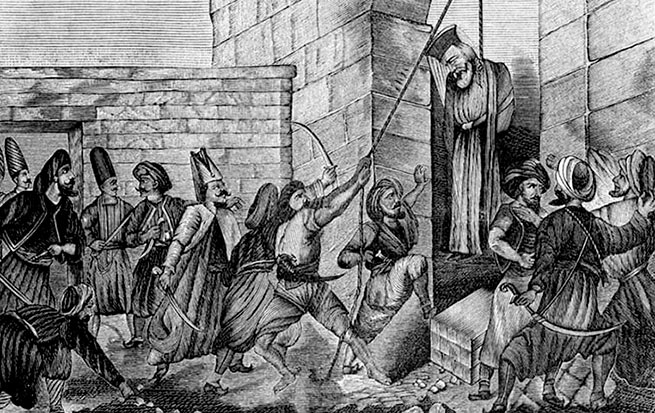
The Ottomans execute Patriarch Gregory V. 19th century engraving
The body of the Patriarch, hanged on Easter 1821 by order of Sultan Mahmud II, hung for three days and nights
Despite the Russian envoy's offers to leave Constantinople, he chose to remain in Phanar. At the end of February (Gregorian calendar) 1821, when Alexander Ypsilanti and the Iterists crossed the Prut River, intending to raise an uprising in Moldavia and Wallachia, Patriarch Gregory excommunicated all insurgents from the Church in order to save the Ottoman Greeks from reprisals, which nevertheless followed later, when the uprising began in Moray on March 25 (April 6), 1821.
According to historians, the excommunication of the revolutionaries by the patriarch was a one-way street and was agreed upon with friends, since he was in a vulnerable position due to the privileges he received from the Sublime Porte. Based on this assessment, if the Sultan had received a negative response to the excommunication, it would have led to the mass extermination of the Christian population in Constantinople.
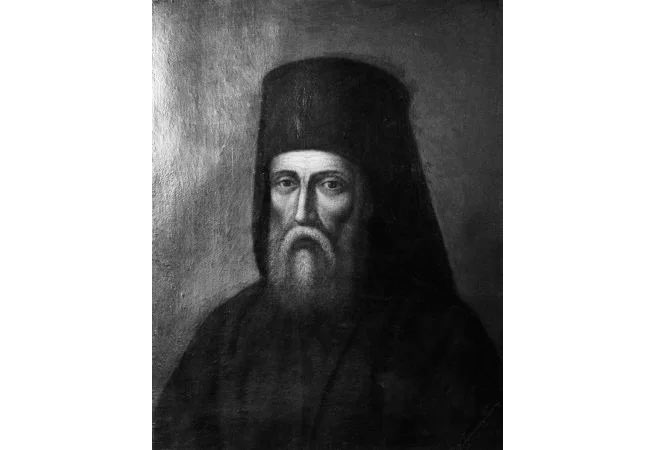
Gregory V in oil painting (source: National History Museum)
Therefore, there is an assumption, and it is shared by some Turkish historians, that Gregory V played his role and excommunicated the revolution as soon as the Sultan asked him to do so.
However, the decisions he made during this third patriarchate (he ascended the Ecumenical Throne on December 18, 1818) continue to divide historians, some of whom point out, on the one hand, that he refused to join Filiki Iteria, and on the other hand , that his works and positions were directed against the Enlightenment and the French Revolution.
However, the fact remains: after the outbreak of the revolution in Moldavia (February 22, 1821), he became a target for the Sublime Porte – his excommunication occurred a few months later, on March 23. However, it soon became apparent that, despite the initial torpor, the revolutionary impulse was far from being stopped; Gregory V's position became even more precarious.
On Easter Day 1821, the great translator of the Sublime Porte, Stavrakis Aristarchis, went to the Patriarchate and read the Sultan’s letter to the members of the Holy Synod. Gregory II was “unworthy of the patriarchal throne, ungrateful to the High Gate and unfaithful.”
Immediately after this, he was arrested and taken to the Constantibasi prison, where he was subjected to terrible torture. Taking the Patriarch out of prison with his hands tied behind his back, they took him by boat to the Fanari pier, while several boats full of Turkish soldiers surrounded them and followed them. Keratios Bay was full. The embankment was also full of people.
Along the way, Jews and Muslims mocked and mocked him. A gallows was erected at the gates of the Patriarchate. The executioner, having taken off his encyclical, his robe, his rosary and everything valuable that he found on him, threw a noose around his neck.
As soon as they stopped, the Patriarch knelt down, thinking that he would be beheaded there. The servants kicked him and forced him to walk forward. He was exhausted by fasting and illness, especially at that age, and walking was not easy. He was brought to the Patriarchate.
Gregory V was hanged on the middle gate of the wall of the mandro surrounding the territory of the Patriarchate. He was 70 years old.
While the enthronement of the new Patriarch Eugene was taking place in the church, Patriarch Gregory gave his soul to the gallows outside. On his chest hung an execution order. Turks and Jews passed by, cursing, mocking and throwing stones at the Patriarch. The vizier himself came to see the execution of the Sultan’s order. He sat opposite and smoked, enjoying the view. Towards evening the Sultan himself passed by.
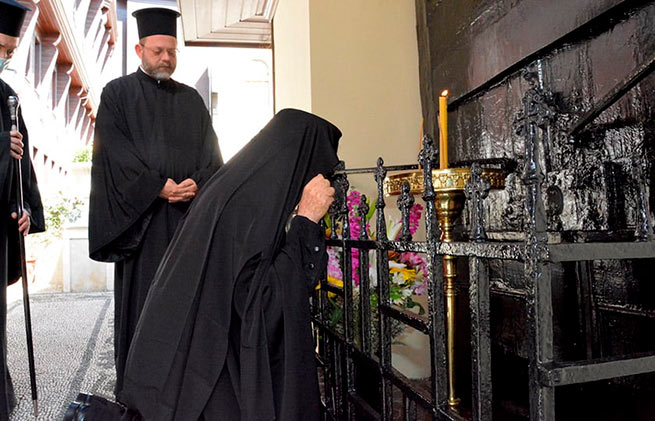
Patriarch Bartholomew at the gate where Gregory V was hanged (photo: Ecumenical Patriarchate / Nikos Papachristou)
The body of the executed man hung on the gates of the patriarchy for three days. Due to Ottoman repressions in Phanar, the Greeks did not dare to ransom him from the executioner. According to one version, on the fourth day, the Jews of Constantinople bought the body of the patriarch for 800 piastres. A crowd of Jews and Turks immediately gathered, they took down the body of Gregory V, stripped it and, tying it by the legs, dragged it with a noose around its neck through the streets of the City with cries of joy, curses and curses against the Christian religion.

Then his body was placed in a boat, a heavy stone was tied to it from the gallows rope and thrown into the sea. But the body of the martyr did not want to drown. Then they tied another stone, simultaneously piercing him in different parts of his body, so that he would take up water and drown.
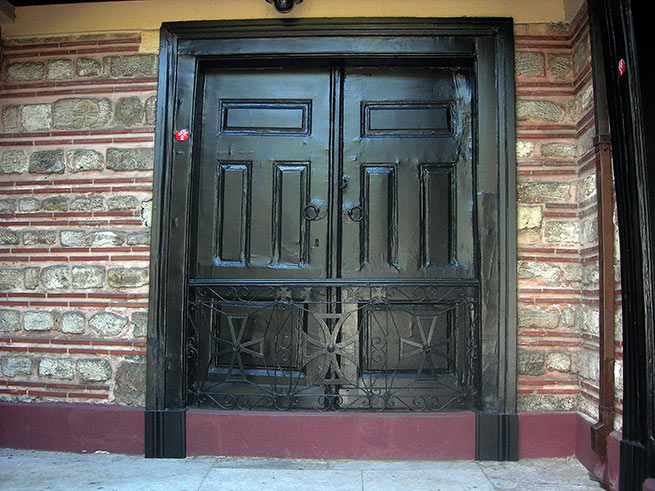
The closed gates of the patriarchy
However, the rope was cut, and the patriarch's body floated in Keratios for three days until it was noticed. On April 16 of the same year, the body was found and identified by the Greek crew of the Russian ship “St. Nicholas” under the command of the Cephalonian captain Marinos Sklavos. The body was taken to Odessa at the invitation of the mayor of Odessa, Count Alexander Langeron.
The body of Gregory V was exhibited in the temple for public pilgrimage and buried with great honors on June 16, 1821. It is noted that the body of the martyr from the moment of execution until the moment of burial (more than 3 months) did not decompose and was incorruptible.
The burial was performed by Archbishop Dimitri (Sulima) of Chisinau. Due to rumors about the desecration of the body of Gregory V by Jews, the first Jewish pogrom in the Russian Empire took place in Odessa, the root cause of which was competition between Greek and Jewish traders.
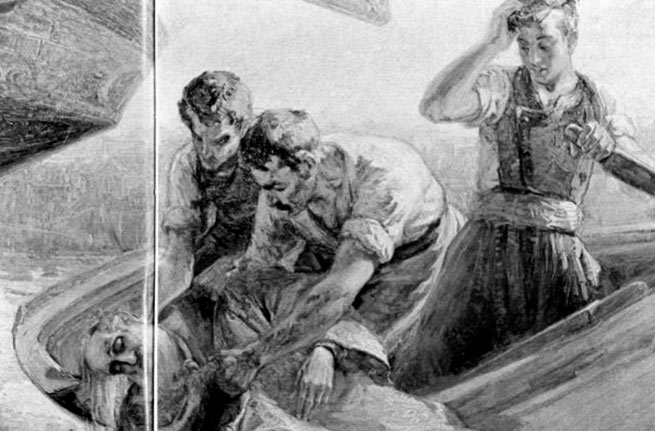
Cliché from a painting by Georgios Roylos, included in the book “Political History of Modern Greece: 1828-1964” by Spyros Markezinis (source: Institute of Historical Research)
On April 25, 1871, the relics of Gregory V were transported to Athens and placed in storage in the metropolis.
In 1921 he was officially canonized by the Greek Orthodox Church. Since 2000, his name has been included in the calendar of the Moscow Patriarchate on April 10 (23) (in Greece, commemorated on April 10 in the Gregorian style). The relics rest in the Annunciation Cathedral of Athens.
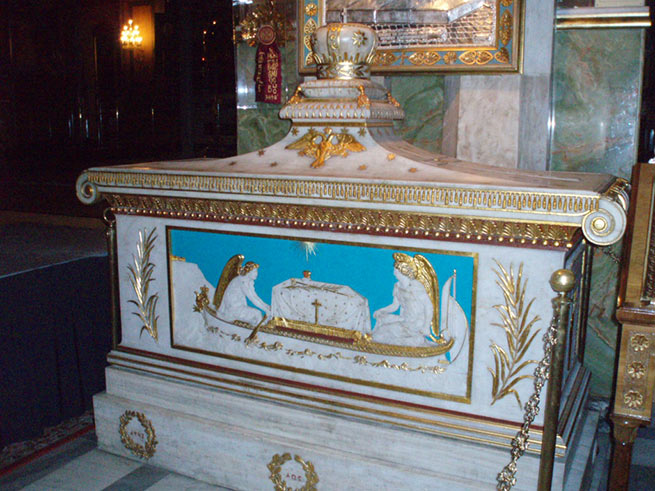
Tomb of Patriarch Gregory in the Athens Cathedral
Russian researcher of the history of the Church of Constantinople Ivan Sokolov wrote at the beginning of the 20th century: “The terrible death of the famous Patriarch Gregory V was of particular importance for the Greeks. It made this hierarch a saint and martyr in the minds of the entire people, branded the Sultan with shame, strengthening the epithet of “murderer” for him, and destroyed any thought of reconciliation of the Greeks, in the face of the entire civilized world justified the Greeks in their desire to overthrow the hated yoke and generally had an enormous moral influence on the course of the further struggle of the Greeks. “… The leader of the church, the ecumenical Orthodox patriarch, spiritual father and representative of the entire Greek people, hanged at the gates of the patriarchy on the great holiday of Easter, subjected to the most dishonorable punishment, without trial or investigation of his case” – this in the eyes of the Greeks was an event of extreme importance, an example true fulfillment of Christian duty, sacrificing oneself as an atoning sacrifice for the salvation of others, martyrdom for faith and fatherland. Therefore, the death of Gregory V religiously sanctified and morally elevated, in the minds of the Greeks, their struggle with the Turks, breathed new strength into them, morally strengthened and justified their exploits and labors. The Turks themselves were subsequently extremely amazed when they saw that the death of the martyr, instead of stopping and suppressing the uprising, expanded and strengthened it.”
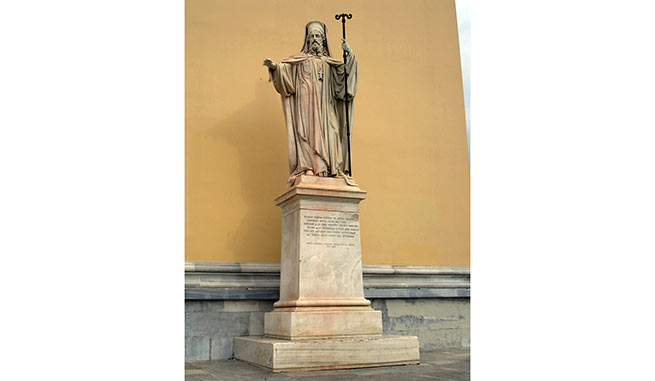
Statue of Patriarch Gregory V to the right of the entrance to the University of Athens. It was installed in 1872 at the expense of Georgios Averoff; sculptor Lazaros Phytalis
In 2004, Deacon Andrei Kuraev in the article “Only for the Motherland, but not for Stalin!” drew a parallel between the activities of the Metropolitan and subsequently the Patriarch of Moscow Sergius and Gregory V. The publicist Nikolai Selishchev responded to him with the article “Superblindness or intent? Regarding the article by A. Kuraev” in the newspaper “Russky Vestnik”. At the beginning of 2006, the chairman of the Synodal Committee on Inter-Church and Inter-Christian Relations of the Greek Orthodox Church, Metropolitan Panteleimon (Karanikolas), indicated that Gregory V believed that his death was necessary for liberation from the Turkish occupation, which he did at the moment when there was no longer any another way to serve the Greek people.
Dionysius Solomos in his “Hymn to Freedom” dedicated seven stanzas to the patriarch:
[…] Everyone is crying. All: All, all, all, all, all, all…
Head of the Church
Cry, cry, cry hanged
It's like he's a killer.
His mouth is wide open.
He eats for hours
Holy Blood, Holy Body
You think he wants to be free again.
The curse he left
Just before he was harmed.
The one who didn't want to fight.
And can fight […].
[…] Όλοι κλαύστε. Αποθαμένος
Ο αρχηγός της Εκκλησιάς
Κλαύστε, κλαύστε κρεμασμένος
Ωσάν νά 'τανε φονιάς.
Έχει ολάνοικτο το στόμα
Π' ώρες πρώτα είχε γευθή
Τ' Άγιον Αίμα, τ' Άγιον Σώμα
Λες πως θε να ξαναβγή.
Η κατάρα που είχε αφήσει
Λίγο πριν να αδικηθή
Εις οποίον δεν πολεμήση
Και ημπορεί να πολεμή […].

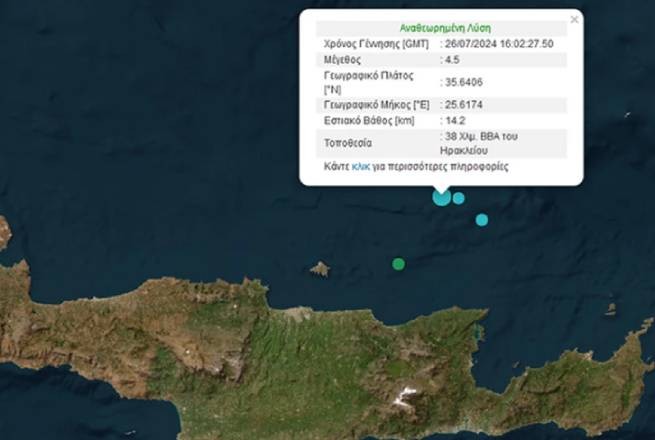



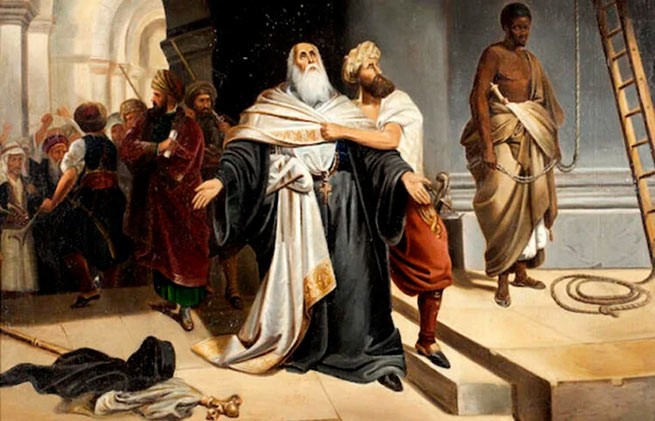

More Stories
Who is he – the only Greek god Pan who got into the chronicles of Plutarch, and what does Jesus Christ have to do with it?
How a cuckolded husband in Ancient Greece paid for his wife’s betrayal and what does the donkey have to do with it?
On this day, Koukidis sacrificed himself to stop the Nazis from desecrating the Greek flag.